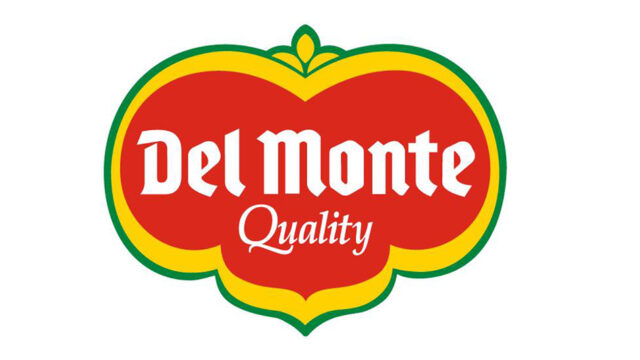In defense of the proposed P256.1-billion budget of the Department of Defense for 2025, Defense Secretary Gilbert Teodoro, Jr. told the House appropriations panel on Aug. 29 that the country acted too late to upgrade its naval and air force capabilities and establish forward posts in the South China Sea. “The lesson is we procrastinated in putting aside a threat,” Mr. Teodoro said. The Philippines is now scrambling “double time” to correct this mistake.
Procrastinate means to “keep delaying” something that must be done. We did not procrastinate, or delay, the upgrading of our naval and air force capabilities. We simply did not act because we felt secure in the iron-clad protection of Big Brother America, which emerged after World War II as the dominant economic and military power and still is.
BACKGROUND
The sinking of the United States Navy ship USS Maine in Havana, Cuba, a colony of Spain, in February 1898 caused tension between the United States and Spain, eventually leading to the outbreak of all-out war between Spain and the United States in late April that year. Commodore George Dewey, commander of the Asiatic Squadron in Hong Kong, was ordered to destroy the Spanish fleet in Manila Bay. That he did decisively on May 1.
Emilio Aguinaldo, who, while in exile in Singapore, had made arrangements with representatives of the American consulate and Commodore Dewey to return to the Philippines to assist the United States in the war against Spain, returned on May 19. By then, the Filipino revolutionists had gained control of much of the country and had surrounded Manila.
However, Governor-General Fermin Jaudenes chose to surrender to white people rather than to what he considered inferior people, the dark Filipinos. To save Spain’s honor, a mock battle between Spanish soldiers and American forces was staged in Manila on Aug. 13. On Dec. 10, the Treaty of Paris, by which Spain ceded the Philippines to the United States for $20 million, was signed, officially ending the Spanish-American war.
Advocates of American expansionism insisted that the United States annex the Philippines as a base for expanding trade and influence in the Pacific. Vice-President Theodore Roosevelt, a promoter of American naval and military power, argued that if the United States did not keep the islands, Japan or Germany, which at that time was in search of colonies, would take them instead. Senator Henry Cabot Lodge of Massachusetts maintained that the United States needed to have a strong navy and be more involved in foreign affairs.
Addressing the US Congress in 1899, President William McKinley declared, “The Philippines are ours, not to exploit but to develop, to civilize, to educate, and to train in the science of government.” What he did not say was to project America as a world power, to use the Philippines as a military and naval base, and to establish a re-fueling station for American vessels sailing to and from China, a growing market for American manufactured products.
On Jan. 23, 1899, the Malolos Constitution was proclaimed and Aguinaldo was elected president. That made relations between Americans and Filipinos hostile. On Feb. 4, 1899, fighting broke out between the American forces and Filipino nationalists led by Aguinaldo.
President McKinley was re-elected president in 1900. He justified the annexation of the Philippines with his policy of benevolent assimilation, citing the intentions of the United States not as a conqueror but as a nation that will help uplift the Filipino people. After three years of bloody fighting, the Philippine-American War was brought to an end when Aguinaldo was captured on March 4, 1901.
ESTABLISHMENT OF US MILITARY, NAVAL BASES
Vice-President Roosevelt became president in September 1901 after President McKinley died from a shot by an assassin. A war monger against Spain, and a military hero during the Spanish-American war, President Roosevelt issued soon after he became president an executive order establishing the first American military bases in the Philippines.
The 2,800 hectares in Subic Bay, where the Spanish colonial government had developed a naval station because it was typhoon-free and the bay deep, was converted into a reservation for the US navy.
The old Spanish naval base at Sangley Point, outside Cavite City, that was captured by Commodore Dewey was converted into a US naval base to function as a fueling station, and subsequently as a communication and hospital facility.
During the Philippine-American War, the land owned by Captain Juan Gonzales in Taguig, Rizal, was expropriated without compensation and declared a US military reservation. It was named Fort William McKinley.
In 1903, 3,420 hectares of the ancestral land of the Aetas of Pampanga, where the grass was suitable for the horses because it was sweet, were developed into a reservation for the US Cavalry and named Fort Stotsenberg. The fort was enlarged to accommodate Clark Airfield in 1918. In 1919, Nichols Airfield, south of Manila, was built for the US Army Air Forces in the Southwest Pacific Theater.
In July 1941, the Mariveles Naval Base in Bataan was built for the use of the US Navy’s Asiatic Fleet. In November of that year, the development of Del Carmen Field in Floridablanca, Pampanga, intended to be a major aerodrome with multiple runways designed to serve heavy bombers, was started. But the engineers were not able to complete the field, and only P-38 aircraft flew from there.
Subic Naval Base, headquarters of the US 7th Fleet, and Clark Air Base, home of the US Air Force’s 13th Squadron, were the largest and the two most important US military installations outside the mainland USA.
All these military and naval facilities were destroyed by the same Imperial Japanese Naval Air Services that bombed the US Naval Base in Pearl Harbor, Honolulu on Dec. 7, 1941. The sneak attacks on Pearl Harbor and on US military and naval facilities in the Philippines brought World War II to the Pacific Theater. The Philippines fell under the brutal control of the Japanese Imperial Army beginning May 6, 1942.
THE PHILIPPINES REGAINS ITS INDEPENDENCE
The guerilla resistance and the American forces liberated the Philippines from Japanese control when General Tomoyuki Yamashita, Commander of the Japanese 14th Army in the Philippines, surrendered on Sept. 2, 1945. On July 4, 1946, the United States recognized the Philippines as an independent, sovereign country and withdrew its authority over the bases.
World War II demonstrated to the US military establishment the importance of establishing an elaborate network of military bases worldwide. Thus, officials in Washington easily convinced the profoundly grateful leaders of the Republic of the Philippines to enter into an agreement regarding the military bases the US had built in the Philippines when it was its colony.
The Military Bases Agreement, signed on March 14, 1947, allowed the United States to establish military facilities in the country for a term of 99 years. It placed no restriction on the use to which the US could put the bases nor the type of weapons that it could deploy or store there. It also prohibited the Philippines from granting base rights to any other country. The agreement practically allowed the bases named above, plus those built during World War II like the Leyte-Samar Naval Base, to remain under the authority and full operational control of the US Defense Department.
Just a week after the bases agreement was signed, another agreement was entered into by the two countries. The Military Assistance Agreement commits the US to provide the Armed Forces of the Philippines with military aid, military advice, and, for Filipino military officers, training in the US. The agreement was not intended for defense against foreign aggression but against the internal Communist insurgents.
The US Defense Department lost control of the bases specified in the Military Base Agreement — Clark Air Base in 1991 and Subic in 1992 — after the Philippine Senate rejected the extension of the agreement by another 10 years, but Philippine officials were still firm in their belief that the country was secure because there was the Mutual Defense Treaty to bank on.
The treaty dictates that both nations would support each other if either the Philippines or the United States were to be attacked by an external party. Philippine officialdom firmly believes that America’s military might is superior to any force on earth.
US President Joe Biden, State Department Secretary Antony Blinken, and Defense Secretary Lloyd Austin III have assured President Ferdinand Marcos, Jr. that the Mutual Defense Treaty will immediately take effect the moment a Philippine metropolitan territory or the island territories under its jurisdiction in the Pacific, or its armed forces, public vessels, or aircraft in the Pacific are attacked.
So, why upgrade our defenses when mighty Uncle Sam has got our back, ask our top officials rhetorically.
Oscar P. Lagman, Jr. is a retired corporate executive, business consultant, and management professor. He is an avid reader of Philippine history.













![BSP_3822-1024x683 [BW file photo]](https://www.bworldonline.com/wp-content/uploads/2024/04/BSP_3822-1024x683-BW-file-photo-640x427.jpeg)
